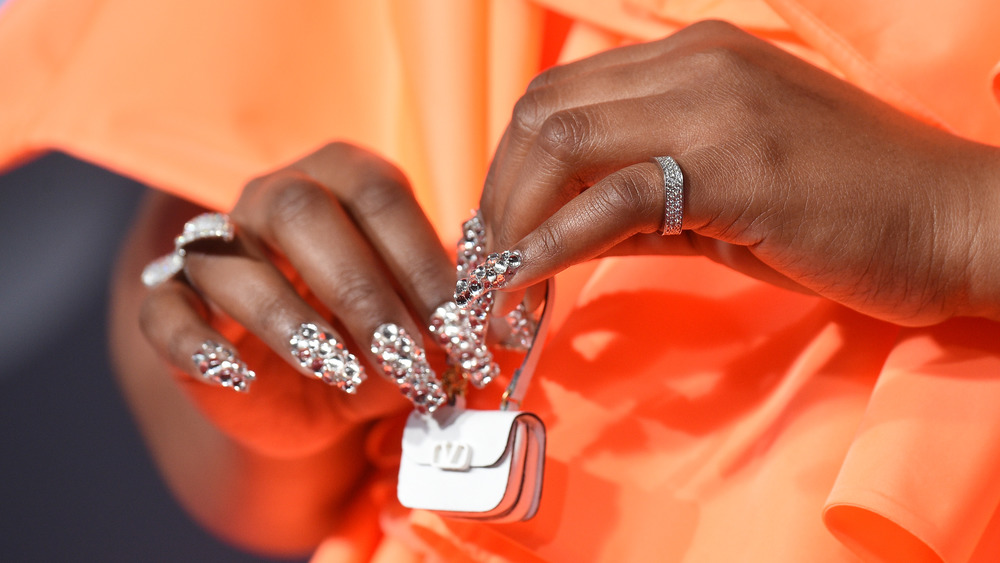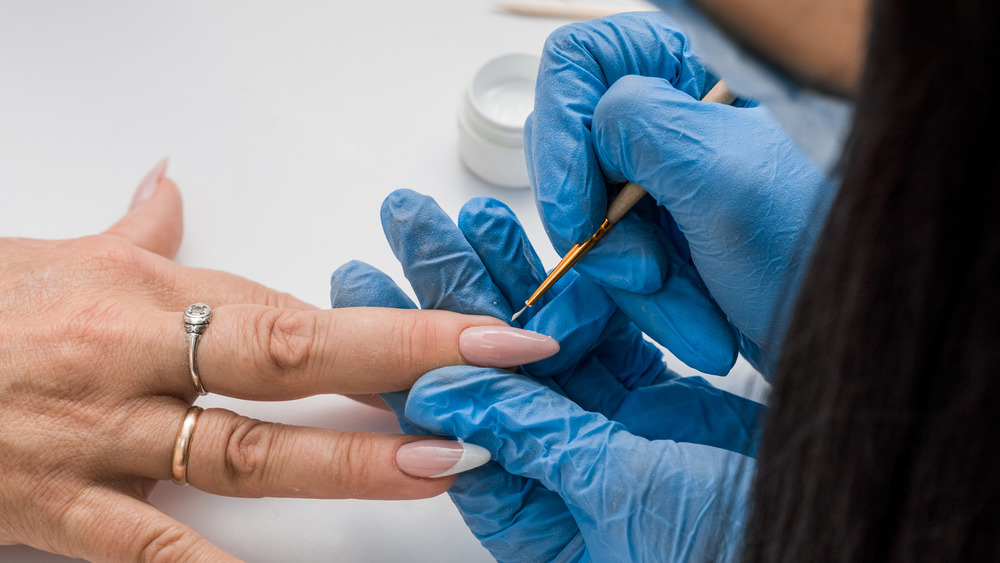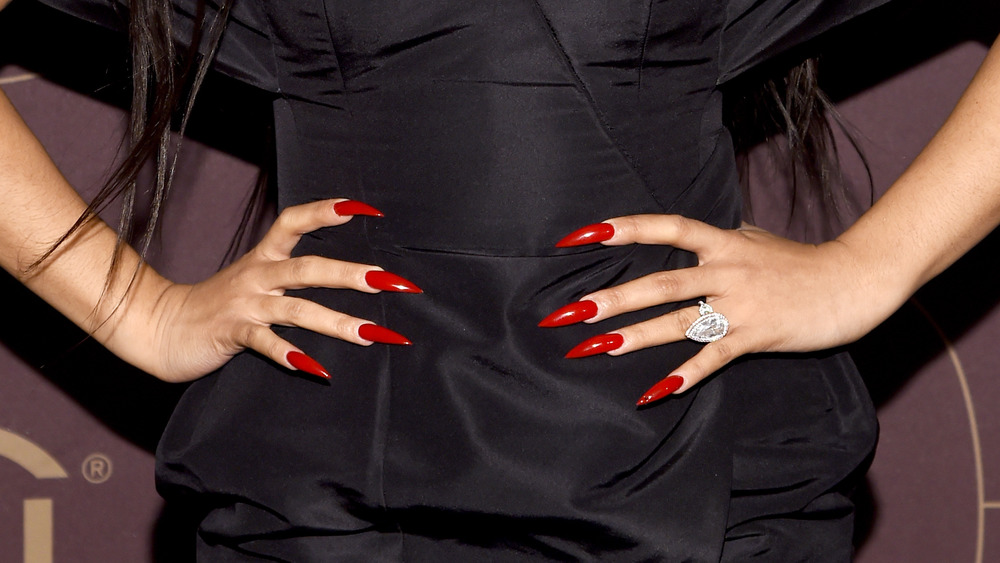The Surprising Origin Of Acrylic Nails
Getting your nails done is one of the best self-care activities. It's both relaxing and makes you feel pretty. While some women are satisfied with just getting some polish, some want to take the extra step to showcase their digits further by getting fake, or acrylic, nails.
Acrylic nails are very common these days, and celebrities can often be seen sporting some insanely long ones that make you wonder how they go about their day. And there's a pretty unexpected person to thank for the long nails that complete a woman's look.
Women have been wearing fake nails for centuries. As one website reports, Egyptians liked putting on fake nails made of bone, ivory, and gold. Cleopatra and Nefertiti are often depicted wearing these long nails. The Egyptians weren't the only civilization that artificially elongated fingernails. According to Refinery29, the Chinese developed fake nails by 600 BCE, which they decorated with gold or silver. These were a symbol of wealth and power, and so they bejeweled these fake nails that also protected their biological nails.
Long and painted nails fell out of favor during the Middle Ages, but during the Renaissance period, rich women began painting their nails in more natural colors. Elaborate nail designs became popular again during the 1920s, when flapper girls began wearing bright red polish. By the 1930s, makeup company Revlon released its first mass-market line of nail paint. But it wasn't until the 1950s that realistic-looking fake nails came onto the scene.
The dental connection
Fred Slack, a dentist, was working in his office in 1957 when he accidentally cut part of his thumbnail off, wrote Nails Magazine. He knew that he could repair his nail using dental acrylic; after all, he already repaired people's teeth with it. But it was fiddly, and he was no manicurist. At the same time, he also wanted it to look realistic, so people don't find out that he cut his thumbnail.
Slack fashioned aluminum foil into a kind of platform to build out the acrylic on his thumb. Thus was born the acrylic nail extension platform. Slack patented his invention, but wanted to do more. Along with his brother, Tom, Slack developed other chemicals to perfect the nails and keep them from yellowing. At first, he used his own dental equipment, although the process has dramatically changed since then.
The Slacks then started their own company, Nail Systems International, to market and develop new products for nail technicians. At first, the company was making things for use in the dental and nail community, but by 1987, they began focusing on the nail industry alone. It also began manufacturing and selling gel polishes. Yes, there are different kinds of nail polishes, and not everything is liquid. These days, Nail Systems International (NSI) is run by Slack's son and grandson.
Teeth and nails are kind of similar
It seems Slack wasn't the only dentist involved in the nail industry. As Nails Magazine reports, back in the 1930s, a dentist named Maxwell Lappe invented a fake nail using acrylic that fits over a patient's nails, to prevent them from biting it off. Unfortunately, these anti-nail biting devices looked very thick and very fake. Another dentist, Stuart Nordstrom, developed the powder and liquid system most used by nail technicians these days. The powder didn't yellow and didn't become brittle with age. In the 1970s, he created the company CND, a brand still in use today. There it is: the connection of nail art to dental health. That's at least three dentists who've basically changed how nails are done these days.
Of course, nail art has come a long way since even the 1970s. With a quick jaunt around social media, you can see a variety of designs on acrylic nails. Some people create extremely complicated nail art that involves rhinestones and other materials. With more celebrities choosing to showcase their long acrylic nails, you can be sure more people will develop more products to make better fake nails and more elaborate designs. The ancient Egyptians and Chinese are probably really jealous of today's acrylic nails.
So maybe when you visit the dentist, thank them for your acrylic nails.


